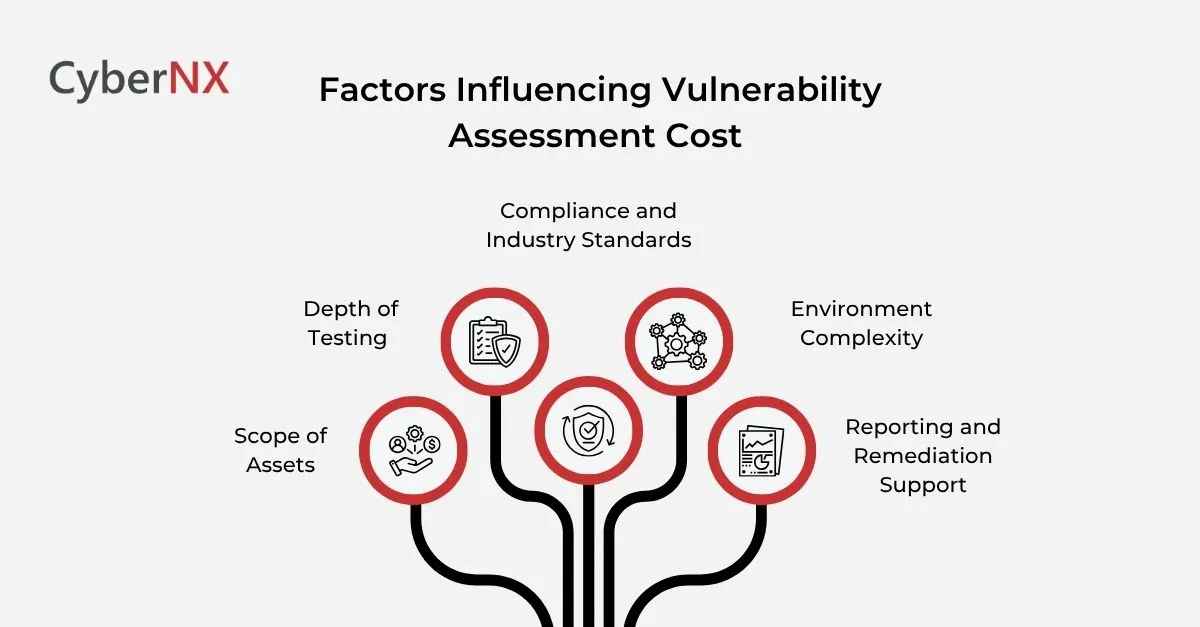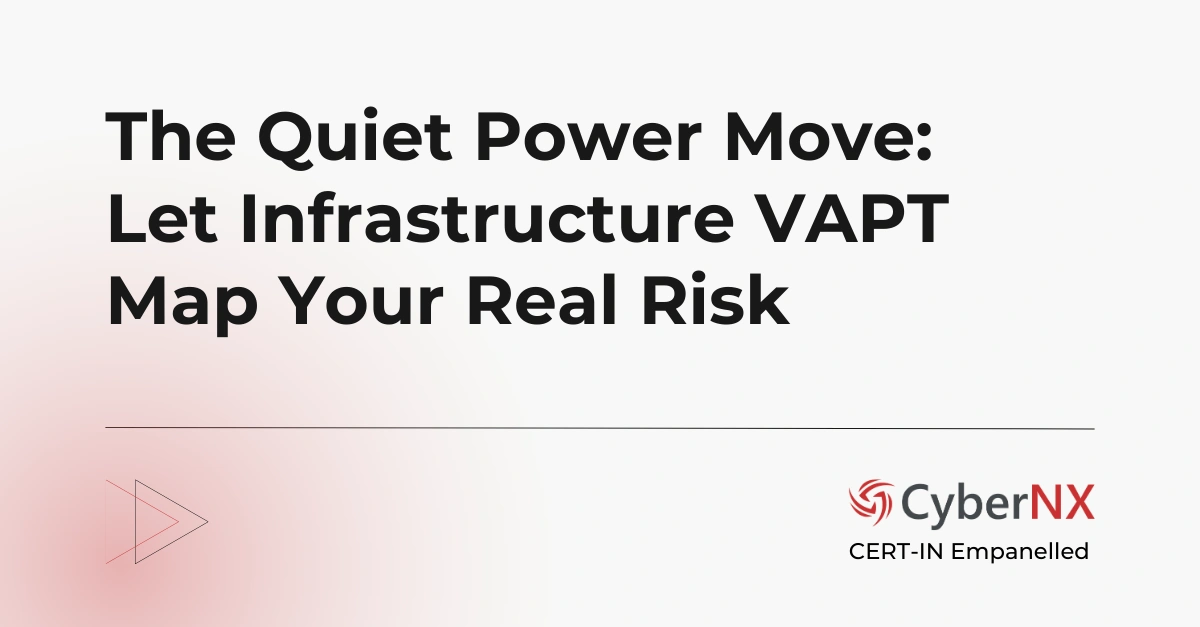Security budgets often stall at one tricky question: what will it cost to assess our vulnerabilities? While the instinct is to look for a number or neat figure, the truth is that vulnerability assessment cost is shaped by many moving parts.
Our experts say that scope, depth, compliance needs, and the way results are delivered – all of it influences pricing. Thus, understanding these drivers helps leaders see what shapes cost. In this blog, we’ll also highlight how to get maximum value out of this service.
Why Cost is more than a Number?
Ask for a price without context, and you probably won’t get an answer. Vulnerability assessments cost you receive from different vendors is rarely arbitrary. It reflects the complexity of your systems, the level of manual expertise required and the outcomes you expect. In one way, pricing depends on what you specifically need. Recognizing this early means you can have better, sharper conversations with vendors and avoid surprises down the road.
Key Factors That Influence Vulnerability Assessment Cost
So, what shapes the vulnerability assessment cost? Find out as it will help you budget smarter.
1. Scope of Assets
The breadth of what’s in play – websites, internal networks, APIs, mobile apps, or cloud environments – directly affects cost. More assets mean more testing hours, reporting, and remediation support.
2. Depth of Testing
A surface-level scan is very different from authenticated testing with user credentials or manual probing for business logic flaws. Deeper testing demands experienced professionals and, therefore, influences the vulnerability assessment cost.
3. Compliance and Industry Standards
Regulated sectors like BFSI, healthcare, or fintech often need vulnerability compliance. Plus, the assessments should align with PCI-DSS, HIPAA, or ISO frameworks. Generating audit-ready evidence adds time and rigor, which naturally shapes the cost.
4. Environment Complexity
Modern IT isn’t always straightforward. Multi-cloud setups, microservices, single sign-on, and containerized workloads introduce layers that testers must account for. The more complex the environment, the higher the effort required to deliver a meaningful report.
5. Reporting and Remediation Support
A bare-bones list of issues is one thing; a prioritized roadmap with retesting to validate fixes is another. The depth and clarity of reporting – plus whether retesting is included – are significant elements of vulnerability assessment cost.
Our thoroughly researched blog on Vulnerability Assessment Report sheds more light on the topic. Read now.
Comparing Different Approaches
Organizations often debate between automated tools and professional engagements. Subscription-based scanning platforms seem cost-effective and can provide continuous visibility. However, automation alone struggles with complex exploit chains or logic flaws that require human judgment.
Professional assessments, while more resource-intensive, bring manual expertise, contextual analysis, and actionable remediation guidance. This difference in methodology explains why vulnerability assessment cost varies so widely across approaches. The choice isn’t about cheapest versus most expensive – it’s about aligning the method with your risk profile and business needs.
How to Maximize Value from Your Assessment
Getting the best return isn’t about spending more, it’s about spending wisely. A few smart steps can ensure your assessment delivers actionable results.
- Define Scope Clearly: Ambiguity inflates estimates. By clearly outlining which systems, apps, and networks are in scope, you ensure quotes are accurate and comparable.
- Request Sample Reports: Not all reports are equal. Reviewing a sample gives you insight into whether findings will be prioritized, actionable, and understandable for both executives and technical teams.
- Ask About Retesting: A true measure of value is whether fixes are validated. Including retesting as part of the agreement ensures you’re not just identifying problems but confirming they’re resolved.
- Phase Large Programs: Instead of a “big bang” assessment, consider phasing: start with critical systems, then expand once value and process maturity are proven.
Selecting the Right Provider
When evaluating vendors, cost should be a lens – not the decision itself. The most insightful questions to ask include:
- Do they have experience in your industry?
- Can they map findings to compliance requirements?
- Will senior experts handle critical parts of the assessment?
- How transparent are they about methodology and deliverables?
Often, the differences in vulnerability assessment cost across providers reflect these elements. A partner that delivers contextual, prioritized insights and validates remediation may appear costlier upfront but ultimately provides greater ROI.
Find out top cybersecurity companies offering this service with our blog Top 5 Vulnerability Assessment Companies in India.
Conclusion
Now that you have read till down here, the conclusion you can draw is that the real question isn’t about cost? Vulnerability assessment cost is best understood as a reflection of scope, depth and outcomes. By framing the conversation around value, organizations can make informed choices, strengthen defences and avoid the trap of chasing the cheapest option.
The most effective assessment is the one that uncovers meaningful risks, guides remediation and validates fixes. Contact us today for vulnerability assessment services and price brackets according to your requirements.
Vulnerability Assessment Cost FAQs
Why does vulnerability assessment cost vary so much between providers?
Costs differ because providers scope projects differently. Some rely heavily on automated scanning, while others invest more time in manual testing and tailored reporting. Compliance requirements, environment complexity, and whether retesting is included also impact the final estimate.
Can automated tools alone keep my costs lower?
Automated scanners are cost-efficient for baseline hygiene, but they often generate long lists of alerts with little context. They struggle to detect complex exploit chains or business logic flaws. A blended approach – automation plus human-led testing – usually offers the best balance of cost and value.
How can I make sure I get maximum value for my investment?
The key is clarity. Define your scope precisely, request sample reports, and confirm whether remediation support and retesting are included. This ensures you’re not paying for generic outputs but for actionable insights that reduce real risks.
Is the cheapest vulnerability assessment option ever the best?
Not necessarily. The lowest-cost option may provide only raw scan data, leaving your team with more work and little strategic guidance. A slightly higher vulnerability assessment cost often includes expert validation, prioritization, and compliance mapping – features that save money and effort in the long run.






